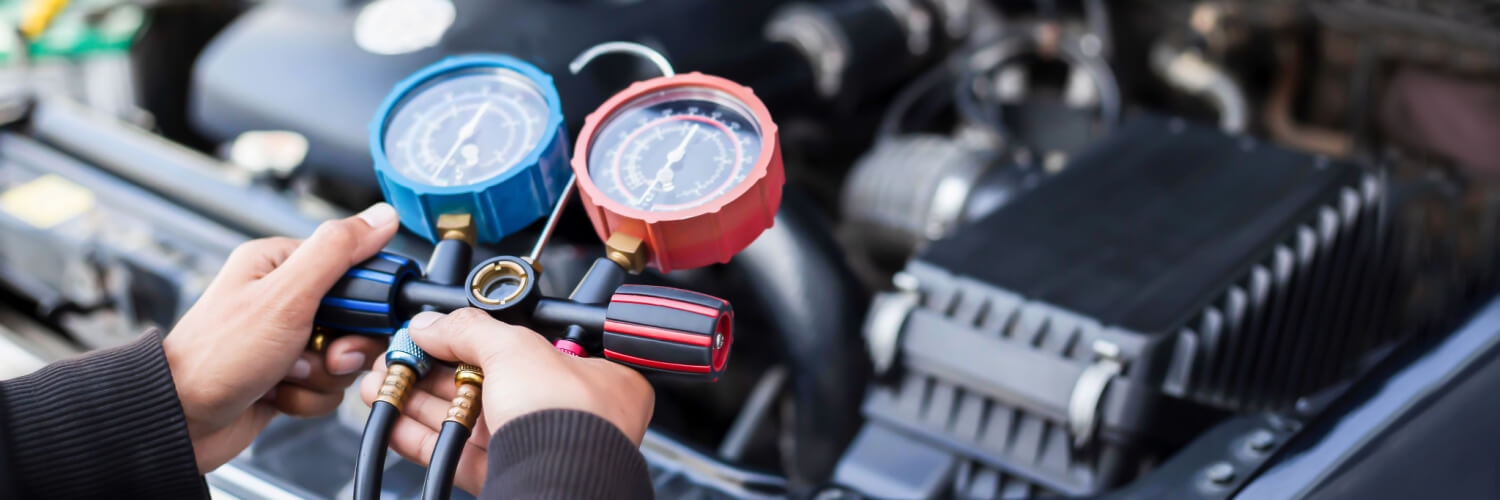
Car air conditioning is a system that allows you to cool the interior air of your vehicle in hot weather, creating a more comfortable environment for the occupants. Air conditioning is standard in almost all new cars and is something that most car owners have come to expect.
The Packard Motor Company in the United States was the first to develop the concept of air conditioning in a car. They introduced air conditioning as an optional extra for car buyers in 1939. Air conditioning was initially slow to gain prominence, but by 1970, nearly half of all new cars produced had air conditioning.
Despite being over 75 years old, your car’s air conditioning system still operates on the same basic principles that evolved in the 1930s. The compressor, condenser, and evaporator are the three main components.
A Car AC system can be separated into two different types:
An orifice tube precedes the evaporator core, and an accumulator precedes the compressor in this system. Before entering the evaporator, the orifice tube restricts the refrigerant flow, converting the high-pressure liquid to a low-pressure mist. The accumulator is a holding tank that contains a desiccant bag that removes moisture from the refrigerant before it reaches the compressor.
The receiver-drier is located between the condenser and the in-line filter kit, and the expansion valve before the evaporator core. Like the accumulator, it includes a desiccant to retain moisture, but the receiver-drier is located on the high-pressure side rather than the low-pressure side. Like the orifice tube, the expansion valve limits refrigerant flow, allowing the pressurized liquid to expand into a low-pressure mist.
The air-conditioning system in a car operates by converting refrigerant from a liquid to a gaseous state. The refrigerant absorbs heat and humidity from the vehicle as it changes states, allowing the system to emit cool, dry air. The air-conditioning process utilizes pressure and temperature to change the refrigerant from liquid to gaseous.
Automotive Air-conditioning systems have a few key components; listed below are a few of them:
An expansion valve or a fixed orifice tube could be used. It reduces refrigerant pressure, resulting in a rapid drop in refrigerant temperature. After departing the metering device, the refrigerant is still in liquid form. Installed on the high-pressure side of the system, between the dryer and the firewall
In the evaporator, the refrigerant returns to a gaseous state, resulting in cooling. As it blows across the evaporator, cabin air is cooled and dried. The only aspect installed inside the passenger cabin is behind the dashboard.
There are several indicators that your vehicle is in need of AC service. A few are listed below:
If your car AC system experiences any technical glitches, visiting Burlington-based The Auto Station is vital. Our state-of-the-art auto repair shop and our fully licensed automotive technicians ensure that your vehicle will be treated to the ultimate standard in quality automotive services. We regularly perform a full range of car care, from fundamental oil changes to complex engine diagnostics and rebuilds.
Our services include pre-purchase inspection/recommendation, drive-ability inspection, electrical system diagnosis, brake service, battery and charging systems, tune-ups, wheel alignments, suspension repairs, new tire replacement and balancing, A/C Servicing and more.